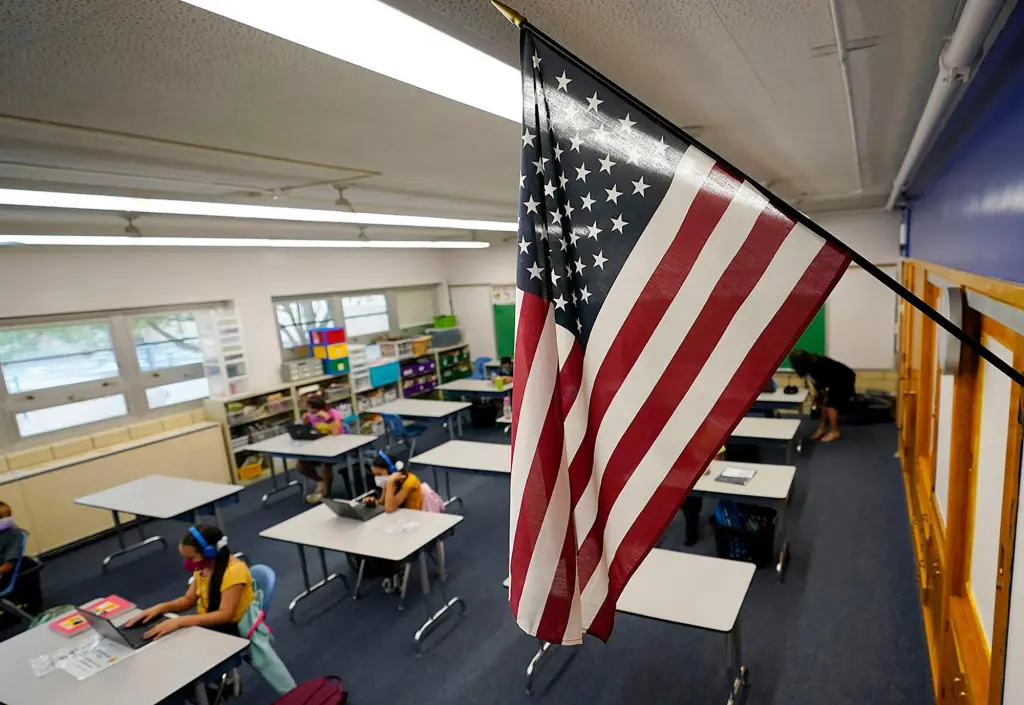Copyright Hartford Courant

In Connecticut classrooms, students are routinely insulting, threatening, cursing and physically assaulting teachers. The issue is the most pressing in education today, teachers and education advocates say. The tense climate has caused teachers to ask to move to other schools to teach and some have been out on workers compensation due to injuries at school, according to the Connecticut Education Association. The increased aggression from students is tied to numerous factors including the aftermath of COVID, the use of technology, and emotional dysregulation of students, according to mental health experts. “I think what we are seeing and hearing across the state consistently is that the safety of the school environment, the working conditions and the student behavioral challenges have really leapfrogged in front of everybody to be the top concern,” said Kate Dias, president of the Connecticut Education Association, the state’s largest teacher union. “It is certainly a significant stressor in the environment that is impacting teachers’ ability to do the instructional work. It is important to remember that these are not just physical confrontations. Sometimes these are students who will swear at their teacher and aggressively or verbally go after them, which ultimately stops instruction in the classroom.” The Connecticut State Department of Education states in its latest report on student discipline in schools for the 2023-24 school year that physical and verbal confrontations increased 44.1%, representing 21,582 incidents. Further, the report showed that personal threatening behavior increased 32% representing 8,956 incidents. There was also a 21% increase in property damage, which included 1,761 incidents. Overall, there were 30,538 such incidents in schools, representing on average 166 incidents per day during the school year across the state. In 2023-24, nearly 37,000 students (7%) or approximately one out of approximately every 14 students statewide, received a suspension or an expulsion, according to the CSDE report. Threats and physical incidents Dias said she has never had a meeting of educators where the issue of physical and verbal confrontations concerning students has not come up. “It is the most pressing issue facing our classrooms right now,” she said. A CEA Back to School survey of nearly 1,000 educators found more than 60% of educators surveyed said they had to evacuate their classrooms due to classroom disruptions that threatened the safety of students. In the same survey, 47% of educators said they had been threatened by a student. “We get everything from very directed personal threats,” Dias said. “We have kids say things like I am going to stab you with my pencil. I am going to kill you.” Dias said some teachers have reported that students have told them, “I am going to hunt you down and find out where you live.” She said she is hearing from teachers more reports of verbal confrontations than physical ones. “I have teachers who are out on workers comp due to injuries,” she said. “Often they are head injuries. Somebody who gets pushed and hits their head. Again, we recognize it is not the intention of the child to actively hurt the teacher. It doesn’t change the fact that it happened. It is often a push or a shove. Biting is not uncommon.” Kevin Egan, president of the Waterbury Education Association, said student aggressive behavior is certainly something Waterbury teachers are seeing. “We are seeing an increase in these behaviors, now even in younger grades,” he said. “We are seeing them in pre-K and some of our biggest issues are actually in kindergarten. It is increasing the stress that has already been there.” Carol Gale, president of the Hartford Federation of Teachers, said over the last few years there has been an increase in teacher worker compensation issues occurring, often due to student outbursts. She couldn’t specify how many teachers were out on workers compensation. Gale said she is encouraged that the school day in Hartford has been reduced from seven and a half hours to seven, hoping that will help alleviate stress for students. She added that the district’s new superintendent Andrae Townsel has also been positive. Further, Gale said it is educators’ responsibility to “manage student behavior and that you need adequate resources and support to do that with children that present more challenging behaviors. Where we have had that in place, behavior gets managed better. When that doesn’t happen, where there is a revolving door through the principal’s office, that tends to create a more challenging climate for staff.” A common occurrence Patrice McCarthy, executive director and general counsel of the Connecticut Association of Boards of Education, said the issue of student behavior is an ongoing worry. “We know the pandemic certainly exacerbated some of these issues,” she said. “Some of these issues are serious mental health challenges that we need more professional support for our young people.” Gary Steck, chief executive officer of Wellmore Behavioral Health, which houses a 24-7 urgent crisis center in Waterbury, said almost every day he gets a call or talks with an educator about a circumstance concerning student behavior. “We have spoken to many educational colleagues who have been hit or injured,” he said. “It is a common occurrence and I think there are a lot of people that thought the great increase of mental health concerns during COVID would now be magically over. That is not the case. What we are hearing particularly is that younger elementary age children are being more physical.” A glimmer of hope, Steck said, is data showing that districts that are banning the use of cellphones in schools see a reduction of fights. Steck said while experts don’t have a definitive answer on the causes of increased student aggression, emotional dysregulation is certainly a factor and the aftermath of COVID. “We are seeing a lot of very stressed and very anxious parents,” he said. “I think it is not unreasonable that if parents are struggling and anxious, that kids are struggling and anxious.” Further, when asked if technology is a factor, Steck said there is data that “shows that too much screen time has a negative effect on physical and emotional development.” Michael Dorn, a national expert on school safety with Safe Havens International, the world’s largest international K12 school safety center, said he is seeing “significant impact on turnover rates, problems with retention of employees and high vacancy rates in quite a few districts he’s worked with in recent years due in large part to concerns over safety. “This not only impacts teaching positions but also many support staff positions such as food service employees, school bus drivers, custodial personnel and security personnel,” he said. “We are most often seeing this in school districts that become severely out of balance with how they handle student conduct violations. Tragically this usually disproportionally impacts the ability to attract and retain high caliber employees in schools serving larger percentages of at-risk youth, which due to the challenges, create the need for our very best teachers and employees for student success in these schools.” Dias said in Connecticut she is seeing a higher rate of mobility of educators in moving to other schools in the state. “I am concerned that these incidents have been prevalent enough to become a detractor for young people who may say this is not where I am going to spend my time and energy,” she said. Solutions Dias said student aggression is often the result of unmanaged or persistent mental health challenges students are facing. She said the CEA and others advocated for new school climate legislation which passed in 2024 and requires districts this year to establish a new “school climate policy.” That policy outlines expectations on responding to challenging behavior, establishes new training requirements and redefines terms and responsibilities associated with school climate personnel, according to information from the CSDE. “When we have these kids who have these issues the goal really is to figure out how we prevent it from happening the next time,” Dias said. “Are there coping skills? Things we need to be doing. What is the right answer for this child? The focus is on how we intervene to help and support. The responsibility lies on every adult in that building to figure how to be part of the solution of how we help our kids. How are we making sure that parents are part of the solutions?” State Rep. Jennifer Leeper, D-Fairfield, chair of the state’s Education Committee, said the new school climate legislation aims to factor in students’ mental health and look at ways to proactively address challenging behaviors before they rise to an incident of bullying. She also said it is important to bring families into those conversations. Dias said while the issues are complex, she has faith the schools and communities will be able to overcome them. “While these numbers are telling a story of something that is uncomfortable for all of us, the story really needs to be: what are we going to do about it?”



